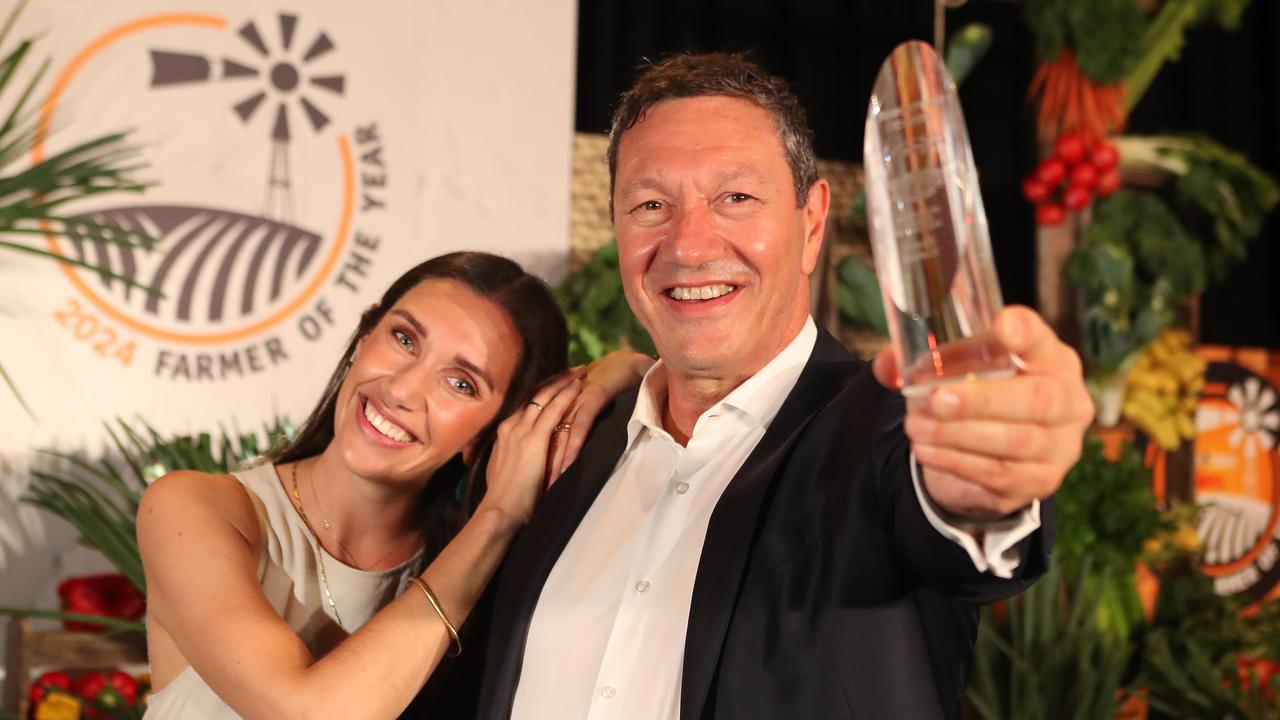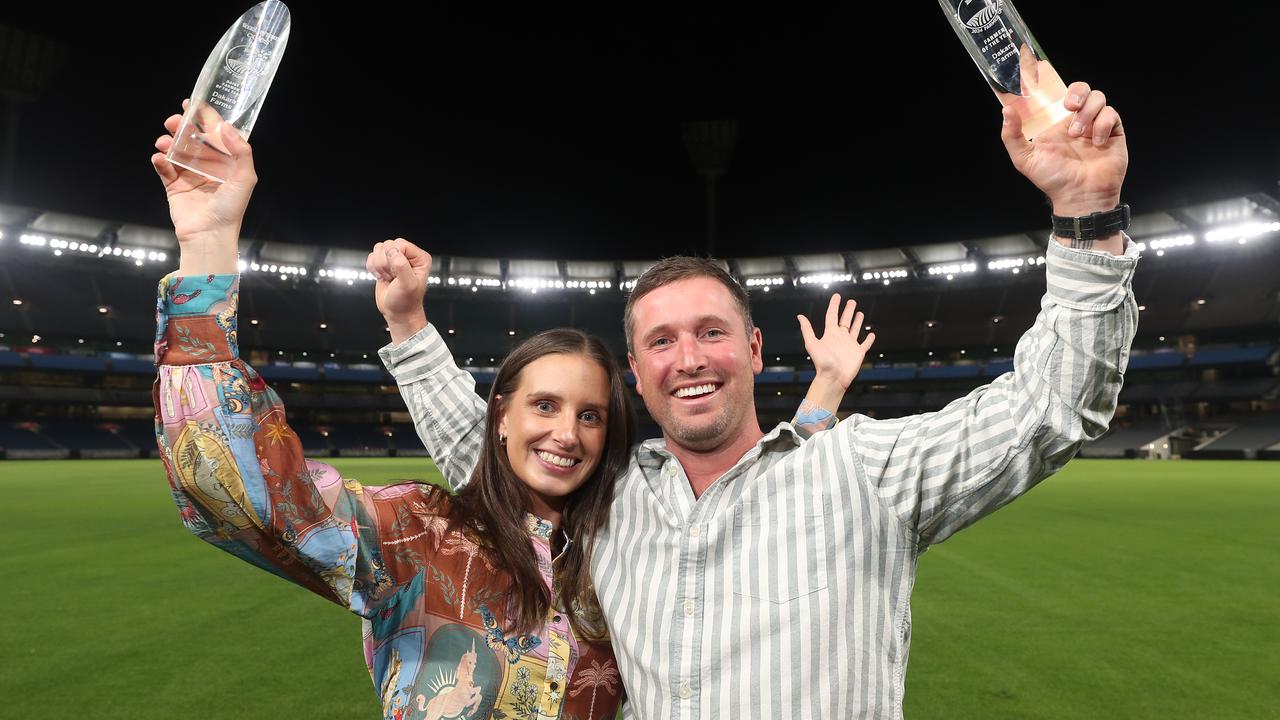South Gippsland dairy farmers Marian and Wayne Macdonald cope with climate change
GROWING up on a 200ha dairy farm in South Gippsland, Marian Macdonald knew about winter mud.

GROWING up on a 200ha South Gippsland dairy farm, Marian Macdonald knew about winter mud.
“Every winter was a miserable affair,” Marian said.
“The ute would get bogged and you’d be up to your knees in mud.”
But much changed between moving to Melbourne for work and returning to take over the Jack River farm in 2008.
“It’s amazing how the weather has changed over time,” the 45-year-old said.
“Now winter is more and more productive.
“Yes, we get some nasty ones, but they’re fewer and fewer.
“The autumn break is less reliable and we have more trouble with shorter springs and longer summers.”
Marian said for dairy farmers in her region, climate change was a no-brainer and all their efforts were focused on how to adapt to remain productive and viable.
“Climate change has reshaped the way we farm”, from pasture renovation, through to calving and fertiliser application,” she said.
“We’re always thinking about how to make the farm more resilient.”
CALF MUSCLE
MARIAN and her husband, Wayne, and two children, farm a herd of 260 self-replacing Friesians.
The herd yields an average 7000 litres, with 3.39 per cent protein, 4.08 per cent fat and an average cell count of 180,000-250,000 cells/ml, supplying Fonterra.
Marian said because of the change in weather, especially the winters, they’ve moved calving from mid-July to the start of May, using artificial insemination, followed by mop-up bulls.
In 2010 Marian was part of a Dairy Australia climate change pilot program in the Yarram district, which ran for several months and aimed to provide dairy farmers with information and elicit questions and concerns from the trial participants.
“The program confirmed everything I had sensed and provided hard data to back up what I was experiencing,” she said.
Not that she needed one, but Marian said the program was a wake-up call. She learned the viable dairy zone in her region was slowly shifting west due to reduced rainfall, while modelling showed the area was losing a tonne of dry matter per hectare a year.
PASTURE MAKERS
ARMED with this kind of knowledge, the Macdonalds have changed their pasture-renovation program.
Rather than sow annuals that do not respond to summer rainfall and risk a “false autumn break”, with early summers killing the pasture, they rely on perennial grasses and more varieties than rye, adding in tall fescue, prairie grass and cocksfoot. Marian said perennial grass was also ready to respond to the increasingly common unexpected summer downpours.
“We’ve spent a lot of time and money increasing the percentage of the farm to perennials (97 per cent) so we don’t have the risk of exposure to an autumn break that doesn’t materialise or comes too late,” she said. “It’s a mosaic of pastures to spread our risk.
“Because summer storms are more common, perennial grass is ready to respond to these unexpected rains.”
In addition to this pasture “mosaic”, the Macdonalds have in the past deep ripped and planted oats and brassicas to open up the soil, which was a solution in 2008 to a destructive outbreak of red-headed pasture cockchafer, a witchetty grub-like creature that lives underground feeding on roots, and which destroyed 42 per cent of their milking area.
“The grub was unknown until recently. There’s little research pre-2008. We can’t be sure but we think it happened because of the change in seasons have made it more hospitable for them,” Marian said.

FEED FOR THOUGHT
IN TERMS of supplementary feed, the herd receives an annual of 1.7 tonnes of grain per cow per year, but the Macdonalds are keen to reduce this reliance on bought-in fodder because “the greater the climate variability the more vulnerable you are to feed prices”.
Being a rain-fed dairy farm, Marian and Wayne have also adapted to ensure increased temperature does not impact productivity. They have based changes on recommendations from Dairy Australia’s Cool Cows website, which has a long list of heat stress impacts, such as a production drop of 10-25 per cent or more in high heat stress.
In 2009 they installed a 4km ring of mains water and added 2000-litre troughs in their 21 paddocks — “because on a hot day a cow can drink up to 20 litres of water in a minute”. In the dairy yard they installed sprinklers to reduce heat stress in the herd.
On hot days the Macdonalds reduce the amount of fibre — hay and silage — in their cows’ diet, because it takes more energy to break down the feed, replacing it with increased grain or green leafy crops. Marian receives Dairy Australia SMS heat stress alerts on her phone and via email, which allows her to adjust pasture rotation, and milk up to one hour earlier and up to two hours later at the end of the day.
“We are quite proactive in taking heat into consideration,” she said.
LAND LOVERS
MARIAN said she and her father shared a love of the landscape and trees, and as such she has preserved 11ha of forest on the farm, with additional new plantations. Following a Whole Farm Plan, designed with the guidance of Greening Australia, she continues to plant 1000 trees a year for shelter belts.
The trees shelter the herd from cold and heat, thereby increasing productivity, while paddocks with the most trees produced the most pasture.
She said the average annual rainfall was “supposed to be 800mm but it’s now so variable I’m not sure any more”.
As for reducing greenhouse gas emissions, industry advice is to follow best practice.
Keenly aware of the volatility of urea, Marian said they took care to avoid spreading it on days that were too wet or windy or dry.
LEADING CHANGE
MARIAN said not only was the dairy industry a leader in climate change adaptation measures, but dairy farmers were working to minimise the risks from climate change.
“I don’t think what we’re doing on the farm is exceptional. I think the dairy community is right on to this climate change. Dairy farmers are so exposed to it and so much of what we do is easily measured,” she said.
“For agriculture to still be debating whether or not climate change exists and whether it’s man-made or a natural variable in 2015 is quite surprising to this dairy farmer.”


